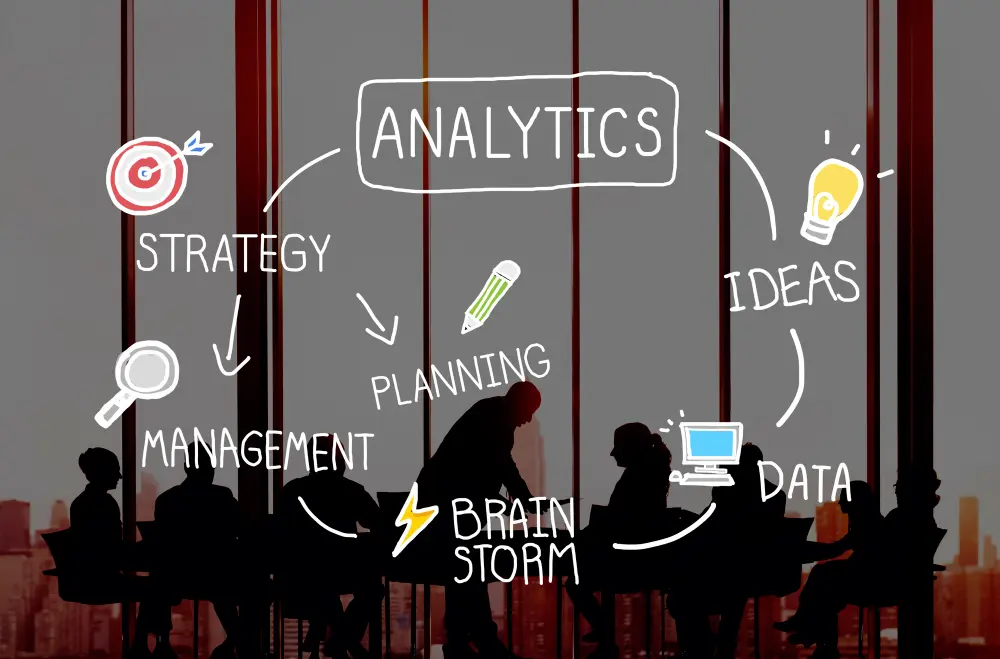Launching a SaaS product in today’s competitive market requires more than just a great product – it demands a well-thought-out marketing plan that outlines your goals, target audience, strategies, and tactics.
A solid SaaS marketing plan serves as your roadmap, guiding your efforts and ensuring every action is aligned with your business objectives. Whether you’re a startup or an established SaaS company, a comprehensive marketing plan can make the difference between obscurity and triumph.
How to Create a SaaS Marketing Plan?
Crafting an effective SaaS marketing plan might seem difficult, but it can be rewarding with the right approach. Let’s dive into the step-by-step process of creating a SaaS marketing plan that sets you up for success.
Understanding Your Audience: The Foundation of Success
To create a SaaS marketing plan that resonates, you must first understand your target audience. LSI Keywords: SaaS marketing strategy, identifying the target audience.
- Conduct deep market research to identify your target customers’ needs, pain points, and preferences.
- Segment your audience based on demographics, behavior, and characteristics to tailor your marketing efforts effectively.
- Utilize tools like Google Analytics, surveys, and social media insights to collect valuable data about your audience.
Defining Clear Goals and Objectives
Without clear goals, your SaaS marketing plan lacks direction and purpose. LSI Keywords: SaaS marketing goals, strategic objectives.
- Set SMART (Specific, Measurable, Achievable, Relevant, Time-Bound) goals aligning with your business objectives.
- Determine key performance indicators (KPIs) to measure the success of your marketing campaigns.
- Your goals should be focused and actionable, whether it’s increasing sign-ups, boosting trial conversions, or expanding user engagement.
Analyzing the Competitive Landscape
A comprehensive analysis of your competitors helps you uncover opportunities and differentiate your SaaS product. LSI Keywords: competitive analysis, SaaS differentiation.
- Identify your main competitors and measure their strengths, weaknesses, strategies, and market positioning.
- Pinpoint gaps in the market that your SaaS product can address more effectively than your competitors.
- Leverage your unique selling points (USPs) to stand out and offer something valuable that sets your SaaS product apart.
Crafting Your Unique Value Proposition (UVP)
Your Unique Value Proposition is the heart of your SaaS marketing plan – it makes your product irresistible to potential customers. LSI Keywords: SaaS UVP, value proposition crafting.
- Clearly define how your SaaS product solves your target audience’s pain points and fulfills their needs.
- Communicate your UVP concisely and persuasively – it should resonate with your audience at a glance.
- Highlight the benefits and outcomes users can expect when they choose your SaaS solution.
Developing Effective Pricing Strategies
Pricing plays a vital role in attracting and retaining customers. LSI Keywords: SaaS pricing strategies, subscription model.
- Research industry standards and competitor pricing to determine a competitive yet profitable pricing structure.
- Consider offering different pricing tiers based on features, usage limits, and customer needs.
- Implement a free trial or a freemium model to allow users to experience your SaaS product before committing.
Building a Multi-Channel Marketing Strategy
Your SaaS marketing plan should encompass a variety of channels to reach your audience effectively. LSI Keywords: SaaS marketing channels, multi-channel strategy.
- Leverage a mix of digital marketing channels, such as social media, content marketing, email campaigns, and paid advertising.
- Craft your messaging and content for each channel and audience segment for maximum impact.
- Consistently monitor and optimize your marketing efforts based on performance metrics.
Creating Engaging and Informative Content
Compelling content is the backbone of any successful SaaS marketing plan. LSI Keywords: SaaS content marketing, engaging content creation.
- Make a content calendar with blog posts, videos, webinars, and downloadable resources.
- Address your audience’s pain points, provide solutions, and showcase your SaaS product’s benefits.
- Optimize your content for SEO to improve visibility and organic traffic to your website.
Leveraging Social Media for Brand Building
Social media platforms offer a good way to hang out with your audience and build brand awareness. LSI Keywords: SaaS social media strategy, brand building on social media.
- Identify your target audience’s most frequented social media platforms and establish a strong presence.
- Share valuable content, engage with users, and encourage discussions around your SaaS product.
- Utilize paid social advertising to amplify your reach and target specific demographics.
Implementing Data-Driven Decision Making
Data-driven insights provide valuable guidance for refining your SaaS marketing strategies. LSI Keywords: data-driven marketing, analytics-driven decisions.
- Utilize analytics tools to track user behavior, website traffic, conversion rates, and other relevant metrics.
- Regularly analyze and interpret data to identify trends, opportunities, and areas for improvement.
- Make informed adjustments to your marketing plan based on data insights to optimize your results.
Nurturing Leads and Converting Customers
Converting leads into paying customers is pivotal to your SaaS marketing plan’s success. LSI Keywords: lead nurturing strategies, SaaS customer conversion.
- Implement an effective lead nurturing process, including automated email sequences, personalized recommendations, and targeted offers.
- Offer value throughout the customer journey, addressing objections and showcasing how your SaaS product meets their needs.
- Provide seamless onboarding and excellent customer support to foster trust and loyalty.
Measuring and Optimizing Campaign Performance
Continuous optimization is key to a successful SaaS marketing plan. LSI Keywords: SaaS campaign optimization, marketing performance measurement.
- Regularly review your marketing campaign’s performance against your established KPIs.
- A/B tests strategies, messaging, and creative elements to identify what resonates best with your audience.
- Use insights gained from testing to refine your campaigns and improve future marketing efforts.
FAQs
How do I start creating a SaaS marketing plan?
To start creating a SaaS marketing plan, understand your target audience’s needs and conduct thorough market research. Define clear goals, analyze your competitors, and craft an addressed, Unique Value Proposition (UVP) for your product.
What are the essential components of a SaaS marketing plan?
A comprehensive SaaS marketing plan includes audience analysis, goal setting, competitive analysis, UVP development, pricing strategies, multi-channel marketing, content creation, social media engagement, data-driven decision-making, lead nurturing, and performance measurement.
How can I effectively leverage content in my SaaS marketing plan?
Content plays a vital role in a SaaS marketing plan. Develop informative and engaging content that addresses your audience’s pain points, provides solutions, and highlights the benefits of your SaaS product. Optimize your content for SEO to improve its visibility and reach.
What role does social media play in SaaS marketing?
Social media is a powerful platform for brand building and connecting with your audience. Identify the platforms your target audience frequents, share valuable content, engage with users, and utilize paid social advertising to expand your reach and promote brand awareness.
How do I measure the success of my SaaS marketing campaigns?
To measure the success of your SaaS marketing campaigns:
- Establish key performance indicators (KPIs) aligned with your goals.
- Utilize analytics tools to track user behavior, website traffic, conversion rates, and other relevant metrics.
- Regularly review your campaign performance and use data-driven insights to optimize your strategies.
What strategies can I implement to convert leads into customers in SaaS marketing?
To convert leads into customers in SaaS marketing, implement lead nurturing strategies such as automated email sequences, personalized recommendations, and targeted offers. Provide value throughout the customer journey, address objections, and offer exceptional customer support and onboarding experiences.
Conclusion
Creating a SaaS marketing plan is a dynamic and iterative process that requires careful planning, creativity, and data-driven decision-making. By understanding your audience, setting clear goals, crafting a compelling UVP, and leveraging a multi-channel approach, you can position your SaaS product for success in a competitive market. Remember, the key to a thriving SaaS marketing plan lies in continuous optimization, customer-centricity, and a commitment to delivering value.


